Clinical Research Faculty
Brandon Togioka, M.D.
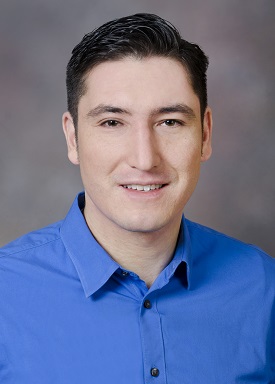
Dr. Togioka serves as the OHSU anesthesiology and perioperative medicine internship year liaison. In this role, he helps guide anesthesiology interns as they navigate their first year as a doctor on the OHSU campus. The majority of his teaching occurs in the clinical setting either in the operating room or on labor and delivery. However, he also participates in the formal resident lecture series, in journal club meetings, and with oral board practice.
Michael Aziz, M.D.
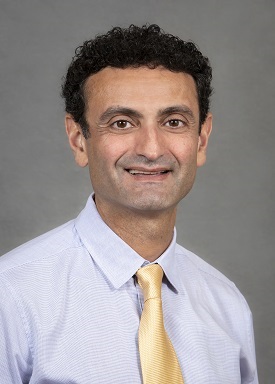
Michael Aziz is a clinical researcher with a keen interest in airway management with a specific focus on video laryngoscopy. He has conducted comparative trials of video laryngoscopy techniques against each other and against direct laryngoscopy. He is also an active investigator of observational outcomes research focused on database investigation. To this end, he has developed and maintained a local preoperative database for clinical research and quality improvement that serves to collaborate with a national group, the multi-centered preoperative outcomes group (MPOG) and the associated quality improvement effort (Aspire).
James "Jim" Carson, Ph.D.
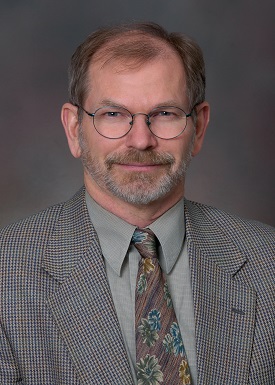
Most of my research has focused on developing and testing the efficacy of complementary and alternative medicine (CAM) therapies—especially mind/body treatments—for persistent pain conditions. My investigative efforts have been strongly influenced by my clinical work as a health psychologist specializing in conditions such as chronic back pain, fibromyalgia, cancer-related pain, and post-concussion syndrome. Prior to becoming a psychologist I was a meditation teacher for many years. Projects I have directed include the first-ever clinical trial of a loving-kindness meditation intervention, which reported improvements in pain and psychological stress in chronic low back pain patients; and a series of trials of a Mindful Yoga intervention demonstrating improvements in pain, fatigue, and emotional distress among patients with either fibromyalgia, or cancer-related pain. I have also collaborated on projects focused on tai chi, and traditional Chinese medicine, for chronic pain. Currently, I am the principal investigator for a project that will conduct a national survey of allopathic physicians at outpatient pain treatment centers in the U.S. to determine the availability, attitudes, and utilization of CAM services within their routine practices. This study will address the knowledge gap that exists regarding the process of care and actual delivery of CAM in outpatient pain centers, as distinct from what is known from CAM trials conducted in rigorous research settings.
Ryan Ivie, M.D.
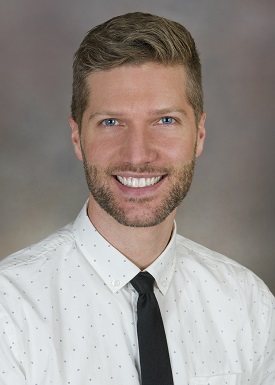
Ryan Ivie is an anesthesiologist with specialty training in Regional Anesthesia and Acute Pain Medicine. He works clinically as an adult anesthesiologist with a focus on performing ultrasound-guided peripheral nerve blocks and teaching these techniques to residents and fellows. His research interests include evaluating novel applications and modifications of regional anesthesia techniques and evidence-based improvement in the education of ultrasound-guided regional anesthesia. He is studying techniques to improve the success rate of thoracic epidural placement, the effect of changes in spinal procedure location on operating room efficiency, and the impact of patient education on ambulatory peripheral nerve block outcomes.
Austin Peters, M.D.
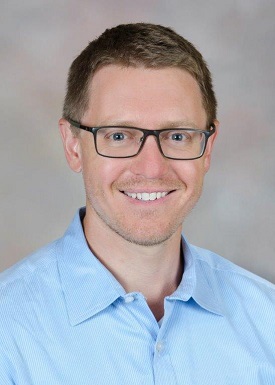
Austin Peters, M.D., is an anesthesiologist clinician-scientist focusing on translational neuroscience. His research explores the brain's cellular response to injury and how anesthetic drugs affect recovery. He has previously collaborated with fellow APOM researcher Dr. Laura Villasana and work closely with his mentor, Dr. Eric Schnell. In addition to research, he serves as an anesthesiologist at APOM, with a clinical focus on neuroanesthesia as well as liver transplantation.
In his current research, he is evaluating ketamine's potential role in traumatic brain injury (TBI) treatment and recovery. Using a mouse model, he has identified unique and potentially beneficial effects of ketamine treatment in this setting, and am developing a translational project to explore and apply these findings to human TBI patients.
Katie Schenning, M.D., M.P.H.

In her clinical practice, Dr. Schenning provides anesthesia for adult patients undergoing all types of surgical procedures, and she specializes in caring for patients with neurological disorders.
Peter Schulman, M.D.
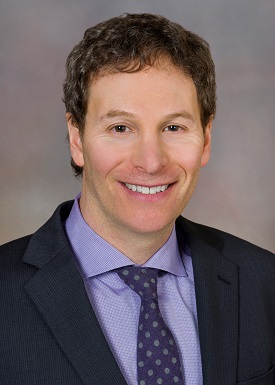
Dr. Peter Schulman practices both anesthesiology and critical care medicine. He is the medical director of the Cardiovascular Intensive Care Unit (CVICU), and chief of the Division of Cardiac and Surgical Subspecialty Critical Care. He started and directs a perioperative pacemaker and implantable cardioverter-defibrillator service. His research focuses on perioperative cardiovascular risk reduction; a principle interest is patients with a cardiac pacemaker or Implantable cardioverter-defibrillator.
Glenn Woodworth, M.D.
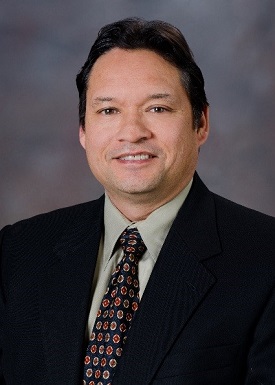
Dr. Woodworth began his medical training in San Diego culminating in finishing his residency at the Mayo Clinic in Rochester, Minnesota. He currently is the Regional Anesthesia and Acute Pain Medicine Fellowship Director, and Associate Professor at Oregon Health and Science University in Portland, OR. In addition to his clinical duties, Dr. Woodworth is an active education researcher and is particularly interested in the assessment of competency, the effectiveness of different educational methods in medical education, and the use of education technology. He is a past FAER grant recipient for his work on the assessment of ultrasound interpretation skills for regional anesthesia and is currently the PI for a FAER grant looking at the achievement of competency as determined by the milestones. Dr. Woodworth is the Editor in Chief of the Anesthesia Education Toolbox, a collaboratively developed peer-reviewed web-site for anesthesia education. The Toolbox learning management system facilitates resident, fellow, and post-graduate continuing education in anesthesia. In his spare time, Dr. Woodworth enjoys spending time with his family, playing tennis and cooking.
Leila Zuo, M.D.
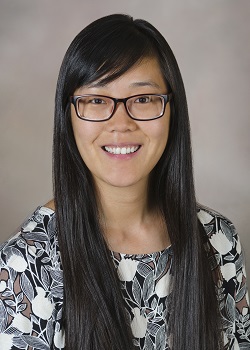
Dr. Leila Zuo is an assistant professor in the Department of Anesthesiology & Perioperative Medicine at Oregon Health & Science University. She obtained her Bachelor of Science in Biomedical Science with a minor in Dance at Texas A&M University. She then earned a Doctor of Medicine degree from UT Southwestern Medical School in Dallas, TX. She completed her residency in anesthesiology at the same institution. She then completed a fellowship in regional anesthesiology & acute pain medicine at Oregon Health & Science University in Portland, OR.
Dr. Zuo proudly serves as the Assistant Program Director of the residency program at OHSU, where her interests include curriculum development and clinical teaching. Her research interests include studying the effects of improved patient education on healthcare resource utilization and studying the feasibility and satisfaction of using an online learning management system to disseminate a universal curriculum.
In her free time, Dr. Zuo enjoys exploring the outdoors, partaking in the local food scene, and spending
Ines P. Koerner, M.D., Ph.D., FNCS
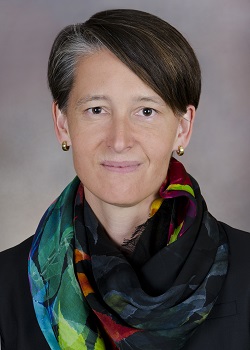
Dr. Koerner is anesthesiologists and neurointensivist, whose research focuses on ways to employ the inflammatory response after brain injury to simultaneously limit damage and enhance recovery. Dr. Koerner completed her anesthesiology residency in Germany and obtained a doctorate degree from Johannes Gutenberg-University in Mainz. After completing post-doctoral and clinical fellowships at OHSU, she joined OHSU faculty as a clinician-scientist. She is currently an Associate Professor and serves as Medical Director of the Neurosciences Intensive Care Unit at OHSU. Her research on the role of microglia after stroke and cardiac arrest has received funding from the NIH and AHA.
The Koerner lab studies the role of microglia, the brain resident innate immune cells, in brain injury and regeneration. Brain injury after cardiac arrest and the resulting cognitive dysfunction is the main focus. Current projects aim to identify the molecular signals by which microglia worsen injury after cardiac arrest and investigate whether microglial priming by ischemia/reperfusion contributes makes the brain more susceptible to dementia. We also explore whether microglia support restorative neurogenesis after cardiac arrest.
Scott Mist, Ph.D., M.Ac.O.M.
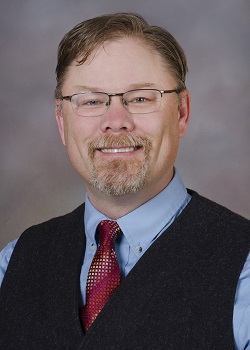
Dr. Mist’s research has two foci: complementary methods for the treatment of pain and related symptoms and mechanisms of central sensitivity of pain. Dr. Mist uses acupuncture as a non-pharmaceutical probe to understand the complex changes and responses to chronic pain with a particular focus on fibromyalgia, chronic widespread pain, and temporomandibular joint disorders. He hopes that his research will provide a better understanding of central sensitivity and provide evidence for non-pharmaceutical approaches to the treatment of chronic pain.
Andrei Sdrulla, M.D., Ph.D.
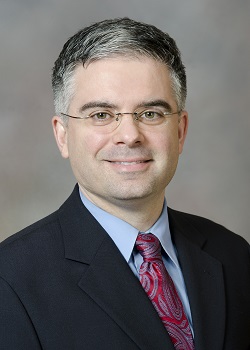
Dr. Sdrulla specializes in the treatment of patients with complex, persistent pain in the spine, cancer pain, neuropathic pain (e.g., complex regional pain syndrome), shingles pain (post herpetic neuralgia) and post-surgical pain. He has advanced training in performing implantations of spinal cord stimulators for the treatment of unrelenting pain. Dr. Sdrulla strongly believes in the multidisciplinary, comprehensive approach to chronic pain championed here at Oregon Health &Science University.
Dr. Sdrulla's laboratory is focused on elucidating the mechanisms of spinal cord stimulation (SCS). SCS is a minimally invasive therapy used for the treatment of refractory neuropathic pain. It is believed that SCS mediates pain relief by electrical stimulation of Aβ fibers (Aβ-ES); however a detailed understanding of its biological basis is lacking, particularly concerning how it engages spinal cord nociceptive pathways. The long-term goals of Dr. Sdrulla's laboratory are to delineate the spinal mechanisms of SCS-induced analgesia in an effort to optimize its clinical implementation for the treatment of chronic pain. Current research is focused on dissecting the influence of Aβ-ES on defined neuronal microcircuits, and testing the role of a critical candidate subpopulation for the analgesic effects of Aβ-ES. The central hypothesis is that Aβ-ES achieves analgesia by inducing dynamic changes in specific populations of spinal cord neurons residing in the superficial dorsal horn (SDH). A combination of electrophysiological and imaging tools (two photon microscopy, optogenetics) are used to determine the extent to which a conditioning train of Aβ-ES modulates high-threshold (C-fiber) evoked activity of excitatory and inhibitory neurons and subpopulations in the SDH in vitro and in vivo. The proposed research is significant because a detailed understanding of how Aβ-ES engages the dorsal horn will provide a direct biological target for enhancements to SCS therapies with a sound mechanistic basis. This work will thus have direct translational relevance, as it may help optimize spinal cord stimulation programs and improve patient outcomes.
Sandy Christiansen, M.D.
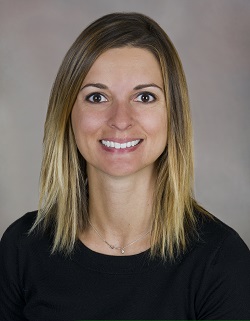
Dr. Sandy Christiansen is an academic pain management, physician with a research interest in elucidating best practices for interventional pain treatment strategies and pain medicine education. She has served as the OHSU-site Principal Investigator for two national, multicenter, randomized, controlled trials relating to treatments for osteoarthritis pain. In 2022, Dr. Christiansen was selected as a mentor for 2022 Foundation for Anesthesia Education & Research (FAER) Medical Student Anesthesia Research Fellowship (MSARF) Summer Program.
The practice of interventional pain medicine is a constantly evolving field where new technologies are developed at a rate faster than high-quality evidence supporting the technologies. As such, researching the efficacy and applications for pain management therapies is a necessary undertaking. Dr. Christiansen has published on best practices for neuromodulation and novel techniques for performing piriformis injections and peripheral nerve stimulation implantations. These studies add additional scientific applications to interventional techniques that are already in use.
Her second research focus is understanding, health care disparities in treating patients who have chronic pain. Social, economic and political factors all influence the ability for individuals to access chronic pain care. She is currently working on a project titled, “Understanding the Value of Interventional Pain Medicine by Measuring the Impact of Lack of Access in Patients of Low Socioeconomic Status.”
Lastly, her third research contribution relates to Pain Medicine education. The practice of pain medicine includes both interventional and non-interventional strategies. The education during fellowship differs widely resulting in variability in access and utilization of these strategies for patients. She worked with a multi-disciplinary team to design an education curriculum for intrathecal drug delivery. Recently, she completed a project titled, “Procedural Education for Cancer-related Pain in Pain Medicine Fellowship: A National Program Survey” whose findings will elucidate knowledge gaps in training to influence future educational offerings.
Kimberly M. Mauer, M.D.
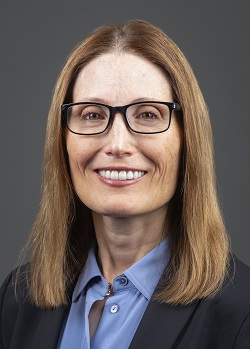
Dr. Kim Mauer joined the OHSU Department of Anesthesiology and Perioperative Medicine in 2006 after completing both a pain fellowship and a pain research fellowship at Stanford University. She is the medical director of the Comprehensive Pain Management Center and Vice Chairman of Pain Management at OHSU. Her publications include work on guidelines for pain management and work on opioid management. Dr. Mauer is certified in both pain medicine and anesthesiology and also works in inpatient pain management.
She also recently completed her Masters in Business Administration. She enjoys being involved in the bleeding disorders community and has been involved for many years.
Kevin Blaine, M.D., M.P.H.
Dr. Blaine is a trauma anesthesiologist with an interest in the diagnosis and management of traumatic hemorrhage. He is an expert in coagulation lab testing, including viscoelastic hemostatic assays, and their role in coagulation management during hemorrhage.
Jeffrey Davis, M.D.
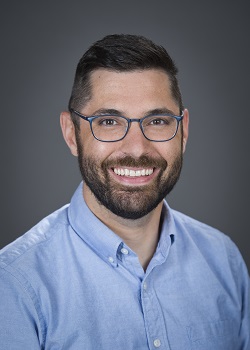
Jeffrey Davis is an anesthesiologist with specialty training in critical care medicine. He works clinically as an adult generalist anesthesiologist and cares for patients undergoing liver transplantation. His research interests include minimally-invasive hemodynamic monitoring and prevention of hemodynamic instability perioperatively.